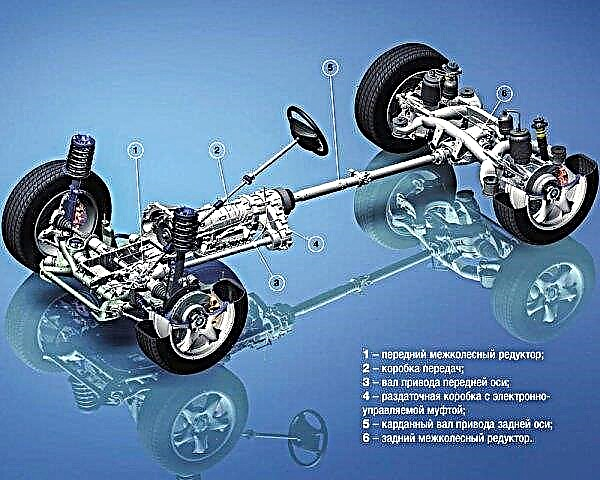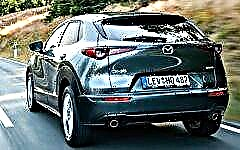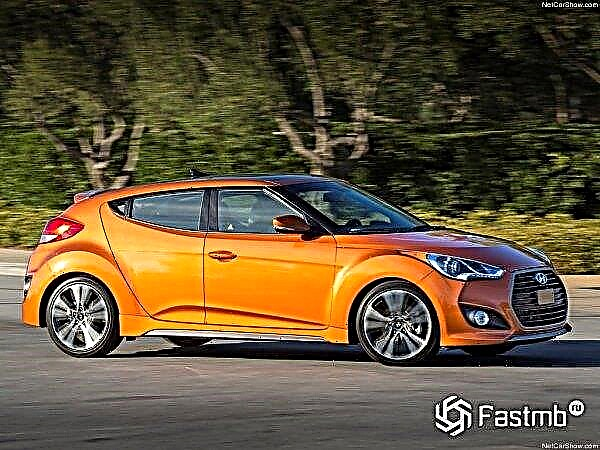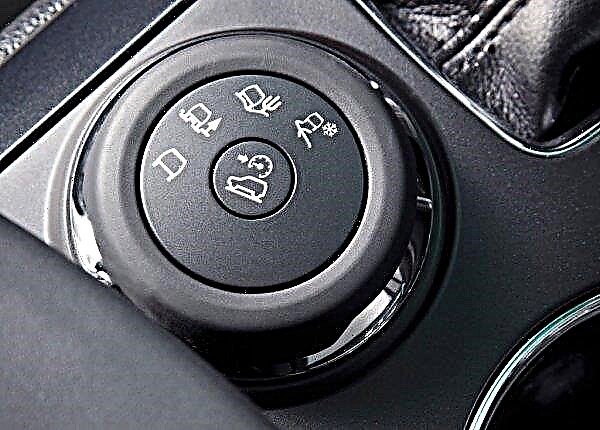xDrive - the inscription on BMW cars is not put just like that or some small addition, this is the first indicator of a difficult drive in the car. Let's consider the principle of operation and the history of its origin.

The content of the article:
- History of appearance
- How everything is tripled
- Principle of operation
Good control over the forces that interact with the vehicle while driving is the first thing for safety while driving. These are aspects that BMW engineers take into account in the first place when developing a new model.
The xDrive inscription on the front fender of a BMW car is not placed casually, this is not a minor tuning or some kind of specific addition. Such an inscription indicates that BMW is equipped with four-wheel drive.
The beginning of the existence of the xDrive system

BMW vehicle experts distinguish 4 generations of the xDrive system. Rumor has it that in 2017, engineers want to introduce a new generation of all-wheel drive.
First generation
The xDrive all-wheel drive system dates back to 1985. The torque was distributed according to the principle: 63% was allocated to the rear axle and 37% to the front axle. The composition of such an all-wheel drive included a blocking of the center and rear interwheel differential using a viscous clutch.
It often happened that inexperienced drivers forgot the principle of using the system, and it quickly broke down. Still, those who used BWM cars without xDrive and with this system argued that the difference in driving was significant.

Second generation
The start of the second generation xDrive dates back to 1991. This time the distribution has changed slightly, now 36% fell on the front axle and 64% on the rear wheels. The center differential is locked by an electromagnetic-controlled multi-plate clutch. The rear cross-axle differential is locked using an electro-hydraulic multi-plate clutch. Thanks to this innovation, it was possible to redistribute the torque between the axles in any ratio from 0% to 100%.
Many car enthusiasts say that it was from this generation that many BMW cars began to be equipped with the xDrive system. And driving a car with such a system has become pleasant and safe. At one time, these machines began to be in great demand and quickly gained a positive reputation.
Third generation
1999 marked the beginning of the third generation xDrive. The distribution of torque on the axle during normal driving became 62% to the rear and 38% to the front axle, and the inter-axle and center differentials became free. The blocking of cross-axle differentials is carried out electronically and a system of dynamic control of vehicle stability appears to help the all-wheel drive.

Fourth generation
In 2003, the latest generation of the xDrive system is singled out. The torque is distributed 60% to the rear axle and 40% to the front axle of the BMW vehicle. The center differential is performed using a multi-plate friction clutch, and the control is electronically. The torque distribution is still possible from 0 to 100%. The interwheel differential is locked electronically, thereby interacting with the vehicle's Dynamic Stability Control (DSC).
Fans of the BMW brand say that thanks to this xDrive system, cars with good cross-country ability, directional stability have appeared, and as a result, safety has improved.
How the xDrive system works

The xDrive system is used for BMW vehicles with rear-wheel drive transmissions. The torque is distributed between the axles thanks to the transfer case. From itself, it represents a gear transmission to the front axle, which is controlled by a special, functional clutch.
But there is a nuance, in sports-type SUVs, instead of a gear transmission, a chain torque transmission is used.
We can say that xDrive is a set of several mechanisms and the interaction of electronic control systems. For example, in addition to the already mentioned dynamic stability control system, the DTC traction control system is additionally used, as well as the HDC descent assist system.

Such systems help xDrive to correctly identify and distribute the load on the axles of the vehicle, while maintaining complete control without the assistance of the driver. As you know, in such cases, at the slightest human factor, an error may emerge, and this can lead to unpredictable consequences.
All these systems are interconnected by means of ICM (Integrated Chassis Control System) and AFS (Active Steering System). Thanks to this interaction, the driver will fully feel the dynamics of the car and be confident in every steering movement.
How xDrive works

The main task of xDrive can be called good off-road ability, driving on slippery surfaces, passing sharp turns, parking and starting off. This is not yet a complete list of where xDrive can help, as the automation itself calculates the axle load and torque distribution.
As an example, consider a few hover situations. Starting off, under normal conditions the clutch will be closed, and the xDrive torque will be distributed in a ratio of 40% to the front axle and 60% to the rear axle. Thanks to this distribution, the traction is evenly distributed around the entire perimeter of the machine. There will also be no wheel slip, which means that the tires last longer. When the car reaches a speed of 20 km / h, xDrive will distribute the torque according to the road conditions.

When cornering at speed, the xDrive operating situation is proportionally different from starting off. The load will be greater on the front axle. The friction clutch will close with more force and the torque will be distributed more to the front axle to steer the vehicle out of the bend.
To help xDrive, the DSC dynamic stability system will be included, which, thanks to the braking of the wheels, will change the load on the vehicle's trajectory.

In a situation when driving on a slippery road, xDrive will remove wheel slip, thanks to the locking of the friction clutch and, if necessary, an inter-axle lock using electronics. As a result, the car will smoothly pass obstacles and easily get out of snowdrifts or wetlands.
When it comes to parking situations, the whole point of xDrive is about making it easier. Thus, the lock is released and the car becomes rear-wheel drive, which reduces the load on the steering wheel and front axle. As a result, the driver can park without effort, and xDrive makes this process easier.
There is no difficulty in using the new generation xDrive systems at all, since all the electronics will decide for you.
Bmw











